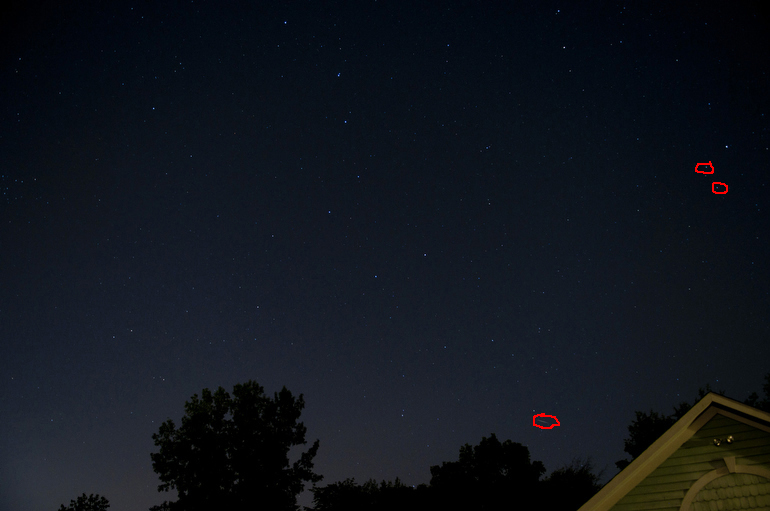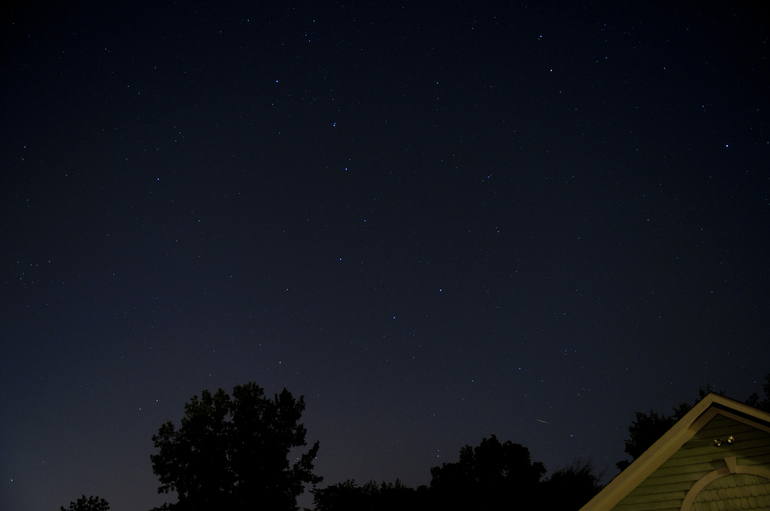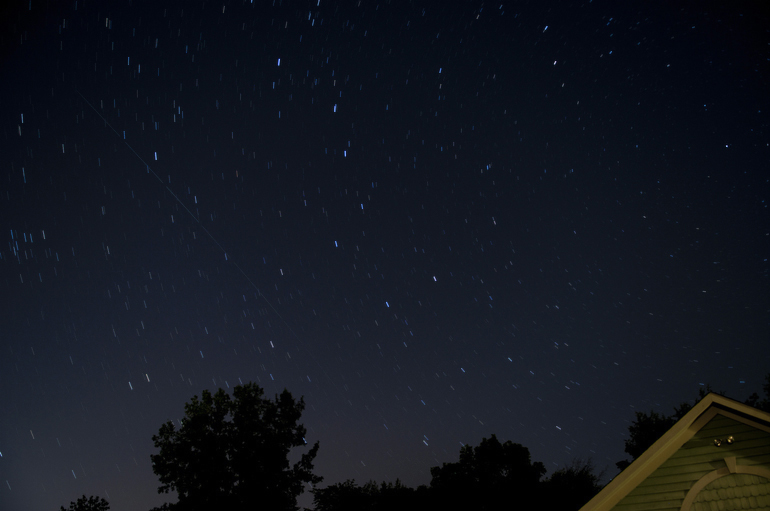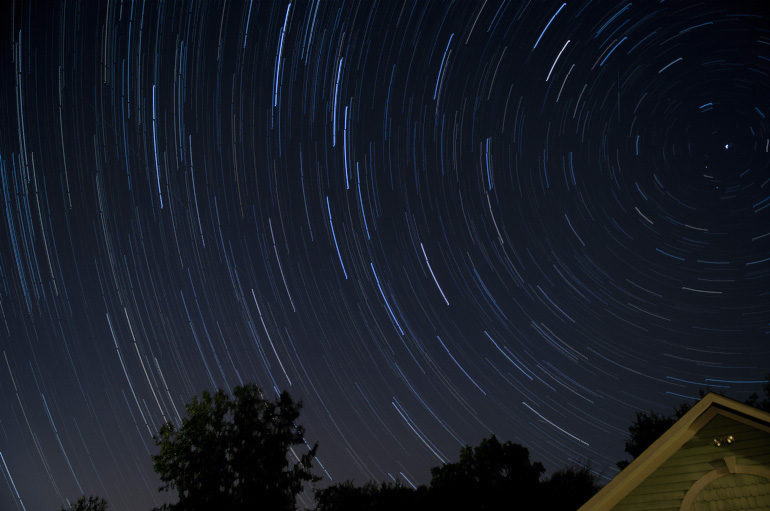Below, I have several composite shots from the shindig, in which I took 186 15-second exposures between 2:32 a.m. and 3:27 a.m. from my house on the outskirts of Indianapolis. In all the photos, you can find the Big Dipper near or in the middle of the frame, its two stars at the end of the ladle pointing toward Polaris, the North Star and the tip of the Little Dipper.
The first is a mix of three exposures showing off three (probable) meteors on one set of stars (the meteors are circled in the second photo). Then there are the three original meteor-containing photos. Two of the meteors (just below Polaris) appear as dots instead of streaks; I'm guessing that's because the streak part of it wasn't bright enough to trip any pixels, while the ending burst was bright enough. The final meteor (near the tree line) did leave a streak.
The sixth picture isn't a meteor at all; it's the body of a rocket called Cosmos 2263, launched by Russia in September 1993. I captured it in 11 exposures, and when I first saw it I thought it could have been the International Space Station, which I've captured before. Alas, if I had stayed out for ten more minutes, I would have caught it.
The seventh photo is the crown jewel of the evening. Using some Photoshop CS6 magic, I combined all 186 photos, and I got long star trails. Quite deservedly, it's my new desktop background.
One more thing: Today is Memorial Day. It's set aside to remember veterans lost both in and out of wars, but it's also a good time to remember all people we loved, but who left us too soon. In the spirit of that, I recommend to you a poignant story from the Story Collider science podcast: Sara Seager: A New Search for Life. I rediscovered it today, and it shares at least two good messages that might help you deal with grief and, just maybe, help you live a fulfilling life.
 Three Camelopardalids meteors
Alex Farris
Three Camelopardalids meteors
Alex Farris
 Three Camelopardalids meteors, marked
Alex Farris
Three Camelopardalids meteors, marked
Alex Farris
 Alex Farris
Alex Farris
 Alex Farris
Alex Farris
 The only meteor I caught that looks like a meteor. You can find it near the tree line.
Alex Farris
The only meteor I caught that looks like a meteor. You can find it near the tree line.
Alex Farris
 This is the Cosmos 2263 rocket, launched in 1993 and still orbiting the Earth.
Alex Farris
This is the Cosmos 2263 rocket, launched in 1993 and still orbiting the Earth.
Alex Farris
 One hundred eighty-six photos make up this composite image of the night sky over Indianapolis in the early morning of May 25, 2014. Three Camelopardalids meteors are shown, as well as the path of an old Russian rocket.
Alex Farris
One hundred eighty-six photos make up this composite image of the night sky over Indianapolis in the early morning of May 25, 2014. Three Camelopardalids meteors are shown, as well as the path of an old Russian rocket.
Alex Farris
